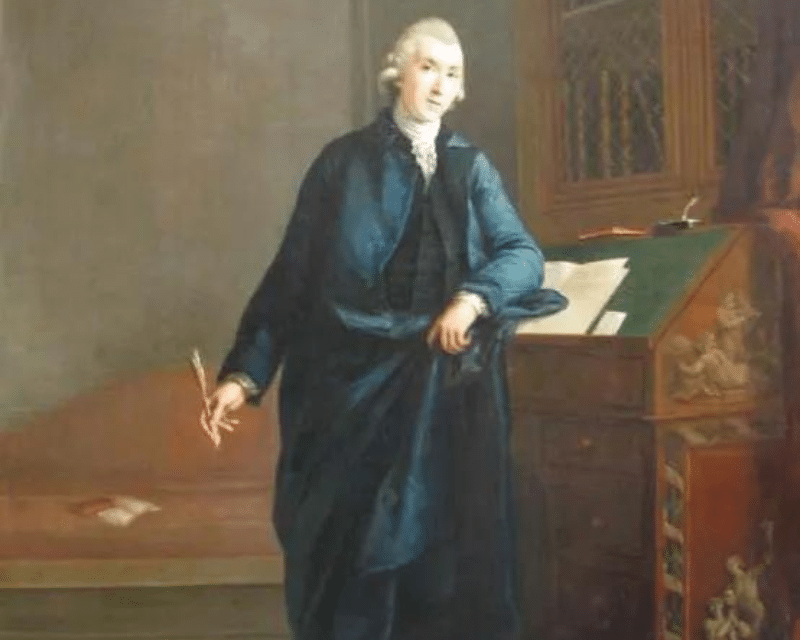- Collected
- Article
The Settle Bed
The story behind the poem

- 13 May, 2019
- Bernie McGill
A number of years ago, Seamus Heaney sent my mother a typed copy of his poem ‘The Settle Bed’ with a dedication written in his own hand below the printed text. They did not know each other, though they were born in the same parish, and my mother was always proud of the association. The gift was delivered by the poet’s sister, Sheena, following a conversation she had with my brothers at a fundraising auction of, among other items, a copy of the poem, handwritten by Heaney himself. On that occasion, my brothers were outbid and when Sheena asked them why they had been interested in that particular lot, they told her that they had intended buying it for my mother who had been very familiar with this particular settle bed, the subject of the poem in question.
The bed had belonged to a distant relative of the Heaneys, a woman known to us locally as Biddy the Tailor. Biddy wasn’t a tailor herself but got the name from her husband, a much older man who was long dead by the time we came to know her. My mother took the job of ‘home help’ to Biddy when I, the youngest in the family, started at primary school. Biddy must have been in her seventies by then. She lived just off the road between our house and the school, in a white lime-washed cottage that looked like a relic from the nineteenth century. The house consisted of a bedroom, a kitchen with an open fire, and a small porch and scullery. The dwelling was not blessed with an inside toilet. Long after my mother stopped looking after her, my brothers and I would call to see Biddy on our way home from school and do small jobs for her about the house.
As a child, I was fascinated with the settle bed. In its customary state, backed up against the wall to the left of the hearth, it was an inhospitable piece of furniture, a wooden box-like bench with a high back but with the capacity to open out frontways into a bed. Heaney evokes it in the poem as: ‘Trunk-hasped, cart-heavy, painted an ignorant brown. / And pew-strait, bin-deep, standing four-square as an ark.’ In my memory the settle was painted an unsavoury mustard colour and was stacked high with towels and bed linen that formed a lair for Biddy’s many adopted cats. I can remember sinking my nails into the layers of varnish that had accumulated over the years. For me, its appeal was in its transformative quality; the promise of what it could be was held in its hinges.
The one time I can remember seeing the settle bed opened out was when Biddy’s niece, Cathy, came to visit from New Zealand, an event that took on mythic proportions and had my mother washing and scrubbing for weeks beforehand. The cats had the run of the house and when they took a notion to go outside, they would meow and claw at the wallpaper to either side of the door into the porch. I remember that my mother, with my brother’s help, stripped and patched the wallpaper, not with the original, which was nowhere to be found, but with the closest match they could locate. She went far beyond what was expected of a ‘home help’ but a visit from a relation from abroad was a momentous event and my mother would not have wanted to be disgraced by an unkempt house, even by association.
When opened out, the settle bed transformed the room. Made cosy with freshly laundered patchwork quilts and cushions, and with its high wooden sides, it looked to me like a play den, part boat, part giant crib. There was something whimsical in the incongruity of it, a fully made-up bed in the kitchen, that made one feel that it might have other powers too. It looked to me like it had somehow landed in the cottage, and that it might just as easily take off again and fly through the narrow sash window, no longer ‘upright, rudimentary, unshiftably planked’, but the makings of a magic carpet ride. When I read Heaney’s words much later: ‘Imagine a dower of settle beds tumbled from heaven’, they chimed with that sense I had had as a youngster of the fantastical possibilities of the thing.
As older teenagers, my friend Saveen and I would collect Biddy’s ‘messages’ from the town on a Saturday, and on more than one occasion, we’d be dispatched to one of the local hostelries with money and a handwritten note from Biddy to fetch a miniature of Bushmills whiskey, the key ingredient in her night-time punch. I suspect, now, that she took it to ease arthritic pains. As Biddy aged and began to manifest the symptoms of early dementia (‘doting’ as it was coined in those days), her manner could become irascible and unpredictable. We fell foul of her only once, in my memory. She was passionate about animals. Saveen’s family dog, Sindy, must have followed us to the cottage and, despite the tyrannous cats, soon became one of Biddy’s adopted crew. The dog was hit and killed one day by a car on the road and, taking it into our heads that Biddy was too fragile to withstand such news, we told her that it had been worrying sheep and, for the time being, had to be kept closed in. We were hoping that Biddy would forget about the dog. At this stage, she would have been in her eighties, I think, and to us seemed to have always been ancient. Week after week Biddy asked after the dog; week after week our lies became more elaborate until finally, she wrote and sealed a letter, addressed it to Saveen’s father and tasked her to deliver it. We were in a bit of a bind. We’d told a lie with the best intentions, but it was a lie nonetheless. We were serious and sensitive young people and prone, perhaps, to a spot of melodrama. By that stage it was hard to explain why we had lied at all. We dared not deliver the letter without knowing the contents: there was nothing to do but to open it. It contained a demand that the dog be set free from its cruel captors, a five pound note paid as ransom, and an affirmation that she didn’t believe ‘the Mayogall liars’ (as she termed us) when we said that the dog had been worrying sheep. There was a certain unfounded paranoia about the letter. It was a side to Biddy that we had never before witnessed, one of those moments in young adulthood when you realise with a shock that grown-ups are imperfect beings. We returned the money, told her the truth. I don’t think things were ever the same between Biddy and us after that.
Biddy died when I was in my first year at university. She had promised the settle bed to Seamus Heaney and at some stage afterwards it was transported to his home in Glanmore. My mother passed away a few years ago and left the copy of ‘The Settle Bed’ to me: both legacies, the poem and the bed itself, ‘willable forward’ as Heaney writes in the poem. Heaney’s generous note reads: ‘For the McGill family, Mayogall — who heard many an och och and och hoh from Biddy herself.’ This is a reference to lines in the poem: ‘Yet I hear an old sombre tide awash in the headboard: / Unpathetic och ochs and och hohs, the long bedtime / Sigh-life of Ulster’. It is signed Seamus Heaney, July 2013, just a few weeks before his death. His sending of it to my mother, on his sister’s request, is just one of the many instances of kindness that I have heard of him and his family.
Thirty years on, I did not know I was thinking about Biddy or her settle bed or her marriage but when I began to write my most recent novel, The Watch House, the character of Nuala appeared. She is a young woman in a childless union to a tailor who is much older than her, and their cottage furniture includes a settle bed. The book is set on Rathlin Island at the time of Marconi’s wireless telegraphy experiments and the plot turns around the implications of this new means of coded communication, how it is possible to intercept messages, how we speak to each other through translation, interpreting, and sometimes misinterpreting, each other’s words. Without consciously attempting to do so, it is possible that the creation of Nuala was a fictional reconstruction of Biddy in her early years, long before I knew her. Who knows where inspiration originates? I think I may owe Biddy a debt. A work of fiction is, after all, a lengthy and elaborate lie, and she recognised one when she heard it. ‘Whatever is given / Can always be reimagined,’ says Heaney in the poem. If ever license were needed to create, to imagine and to reimagine, I know where to go to find it. It is hanging, framed, ‘four-square’ on my wall, signed by Seamus Heaney himself.
You might also like:
The Life and Times of Reverend David Williams
As we get ready to celebrate our 234th anniversary on 18 May, a recent RLF grant beneficiary takes a deep…
Anywhere But a Room of One’s Own
I am a writer looking to be re-homed. All I need is a laptop, a table and a chair, and…
RLF Fellows’ News: May 2024
Publishing RLF Fellow Tom Lee’s new book, The Bullet, his memoir about family and mental health, has recently been published…


